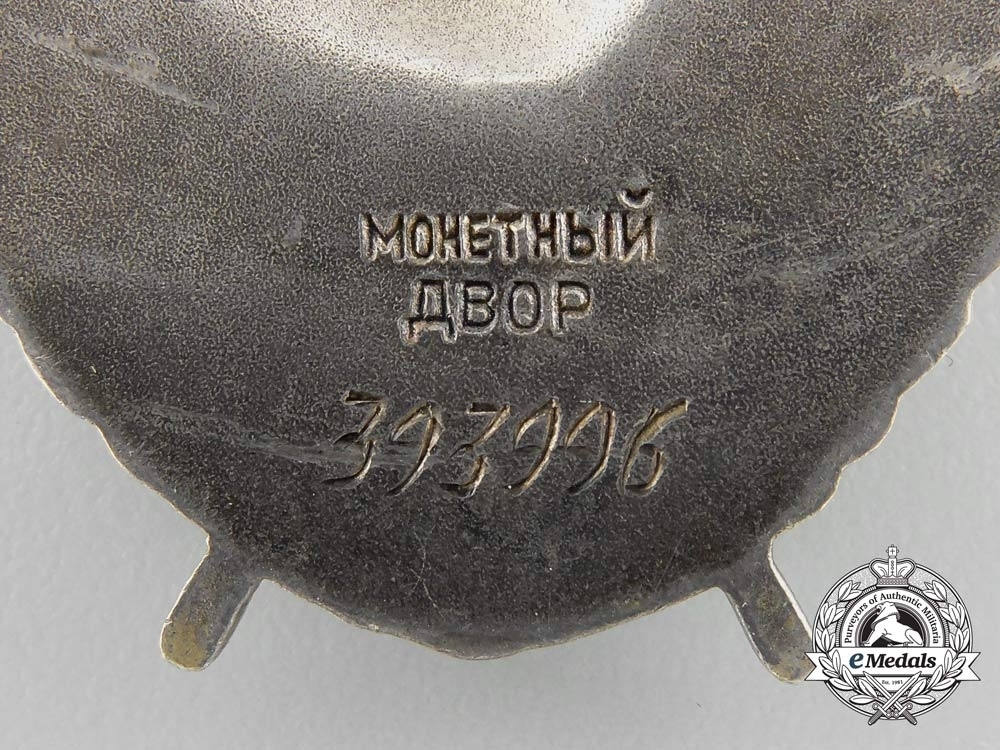Monetny Dvor
LAST UPDATED:

Attributes
History
The St. Petersburg Mint was established under the leadership of Peter I in 1724. It brought about the centralization of the coins in Russia and began the production of commemorative awards.
During the first half of the 18th century, foreign medallists worked in Russia. By the mid 18th century, a national school of medalist had begun and the professional/artistic education grew. In 1748, a well respected Scottish craftsman, Benjamin Scott trained three apprentices who would go on to become leading Russian medalists (Ivan Kudryavtesev, Samoila Yudin and Timofey Ivanov). From the 1760s, short term contracts with foreign medallists ceased.
After Catherine II's ascended to the throne, a major economic upturn occurred, and the mint saw the highest period of development of coin product in St. Petersburg in the 18th century. Numerous medals were created (roughly 94) during this time in accordance with events related to ancient Russian history.
By the end of the 1770s, the Mint employed over 200 individuals. In 1799, it was necessary to physically relocate to the State Assignation Bank (the Bank Mint) for reconstruction. In the 1800s, the mint saw new inventions to increase efficiency and production, sucth as the "coin impression" machine, a brainchild of Ivan Afanasievich Nevedomskiy, which could be operated by one person instead of three. New developments were also made in science and technology, such as a new method of processing platinum into products.
Numerous medals were made that were dedicated to the Patriotic War of 1812.
In 1833, a school was opened for employees which would train pupils. Those that were the highest in their class were trained in medal art. Fedor Tolstoy was a medal artist who dedicated 50 years to medal art. His pupils, Pavel Utkin (a gifted portraitist),and Alexander Lialin (head medalist of the mint) are two very well known Russian artists.
Jubilee medals for the War of 1812 were extremely popular, founded by Nikolay II, of which 505 thousand light-bronze. During the First World War, the salary increased for the employees du to the special wartime conditions. Prior to 1917, all Russian Orders except the Mark of Distinction of the Order of St. Anne and the Mark of Distinction of the Order of Saint George (Saint George's Cross) were produced privately, outside of the Mint.
In 1919, the first Soviet commemorative medal (The Second Anniversary of October) was produced. Later that year, the issue of the first soviet awards (the Order of the Red Banner of the Russian Soviet Federative Socialist Republic) also began. Now all orders were made by the Mint, instead of by private companies.
In 1924, Petrograd was renamed to Leningrad, and therefore the institution recieved a new name as well - the Leningrad Mint.
The second Soviet order (the Order of the Red Banner of Labour) was established in 1928. Two years later the preemenient Soviet award, the Order of Lenin, was instituted. Numerous silver medals were created in 1938 including the "For Valour" and "For Battle Merit" military awards, "For Distinguished Labour" labour awards, and commemorative medals, to name a few.
In the beginning of the 1930s, the issue of departmental insignia began, which employed the same artistic design and quality as the orders and medals of the time. Over 70 badges were made before the war, totalling more than 7 million pieces.
The Mint was heavily affected during the Second World War. In 1941, it was evacuated to Krasnokamsk, as the Seige of Leningrad began on September 8, and only 20-30 employees remained. They were tasked with protecting the equipment and territory. The Award Department of the Presidium of the Supreme Soviet of the USSR became the major customers of the new mint, while orders and medals became the main products.
The first military medals of the war (For the Defense of Leningrad, For the Defence of Odessa, For the Defense of Sevastopol, For the Defence of Stalingrad) were instituted in 1942. They were made of brass and were the first medals to be worn on the pentagonal ribbon.
In 1941, the mint became part of Goznak, a joint-stock company responsible for research and development, as well as the manufacturing and security of banknotes, stamps, coins, state orders and medals.
In April 1942, the Moscow Mint opened and many employees were moved there. In 1946, preparations began to return to Leningrad. By the end of the year, all equipment, raw materials and invetories has been relocated back to their place of origin. The goal of the Mint was to regain their pre-war production levels as fast as possible, striving for national economic revival.
In the 1950s, the mint began production of coins, medals and orders for other socialist countries, including Bulgaria, Mongolia, Romania, Albania, Czechoslovakia and Korea.
In 1957, a commemorative medal for the Defence of Leningrad was awarded and continued to be awarded until 1978. It was conferred upong approximately 1,445,900 people.
Throughout the 1950-1960s, medal art was aimed more towards science, culture and art advancements. Throughout the 1960-1970s, the Mint struck roughly 1 million badges, for graduations, high achievements, military insignias etc.
In 1974, the Order "For Service to the Motherland in the Armed Forces of the USSR" was established in three classes and varying amounts of gilded elements based on class. It is the only military Order to be implemented after the Great Patriotic War.
The Mint was responsible for Orders and award medals for the 1980s Moscow Olympics.
The Mint is still active. For more information, visit: https://goznak.ru/en/about/history/



Scroll Top